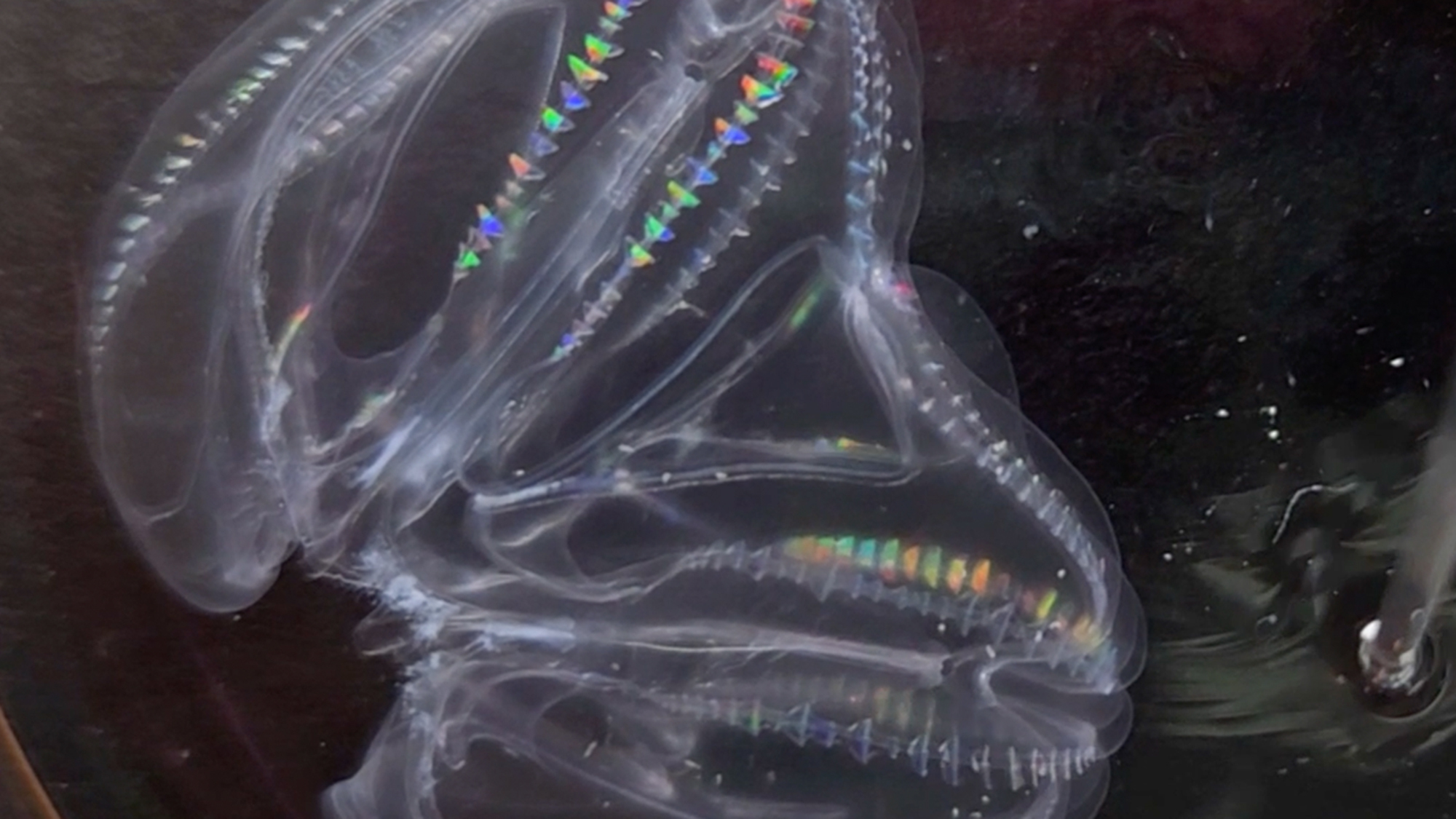For one species of comb jelly, survival from injury can come down to numbers. Two Mnemiopsis leidyi– aka the sea walnut–can fuse together and turn into one after an injury. These bioluminescent ctenophores will then rapidly get their muscle contractions in sync and even merge their digestive tracts to share food sources. The findings are detailed in a study published October 7 in the Cell Press journal Current Biology.
“Our findings suggest that ctenophores may lack a system for allorecognition, which is the ability to distinguish between self and others,” Kei Jokura, a study co-author and biologist at the University of Exeter in the United Kingdom and National Institutes of Natural Sciences in Okazaki, Japan, said in a statement. “Additionally, the data imply that two separate individuals can rapidly merge their nervous systems and share action potentials.”
[Related: Comb jellies won’t give into the extreme pressures of deep-sea life.]
Comb jellies make up over 100 known species in the phylum ctenophora. These tiny, oval shaped marine invertebrates use eight rows of comb-like plates to move throughout the water. Their bioluminescent blue-green “combs” will light up both coastal shores and the dark depths of the ocean’s Twilight Zone. They are known to eat other ctenophores and salps, while fish, turtles, marine mammals, and more dine on comb jellies. Comb jellies also appear to be able to fuse together.
The team on this new study saw their unique form of body building in action while keeping a population of comb jellies in a seawater tank in the laboratory. They saw an unusually large individual that appeared to have two butts and two apical organs. Jellies typically only have one of these sensory structures, so the team was curious if this creature with double appendages was the result of a merging of two injured jellies.
The team then removed a part of the comb jelly’s lobe and placed them close together in groups of two. Nine out of 10 times, the injured individuals became one and went on to survive for at least three weeks.
Additional study revealed that after one night, the two original individuals seamlessly became one without any apparent separation between them. When they poked at one lobe, the whole fused body reacted with a prominent startle response. According to the team, this suggests that their nervous systems also were completely fused together.
“We were astonished to observe that mechanical stimulation applied to one side of the fused ctenophore resulted in a synchronized muscle contraction on the other side,” said Jokura.
The fused comb jellies also had spontaneous movements for the first hour. The contractions on each lobe then started to synchronize more. After two hours, 95 percent of the fused animal’s muscle contractions were completely in sync.
[Related: Surprise! These sea cucumbers glow.]
Their digestive tracts had also fused. The team fed them fluorescently labeled brine shrimp, so that they could follow it throughout digestion. When one mouth ate a brine shrimp, the digestive particles worked their way through a fused canal. The comb jelly eventually expelled the waste products from both anuses. However, they did not poop at the same time.
According to the team, it is still unclear how the fusion of two individuals into one works as a survival strategy. Future studies could help fill in those gaps, with potential implications for regenerative research.
“The allorecognition mechanisms are related to the immune system, and the fusion of nervous systems is closely linked to research on regeneration,” said Jokura. “Unraveling the molecular mechanisms underlying this fusion could advance these crucial research areas.”

